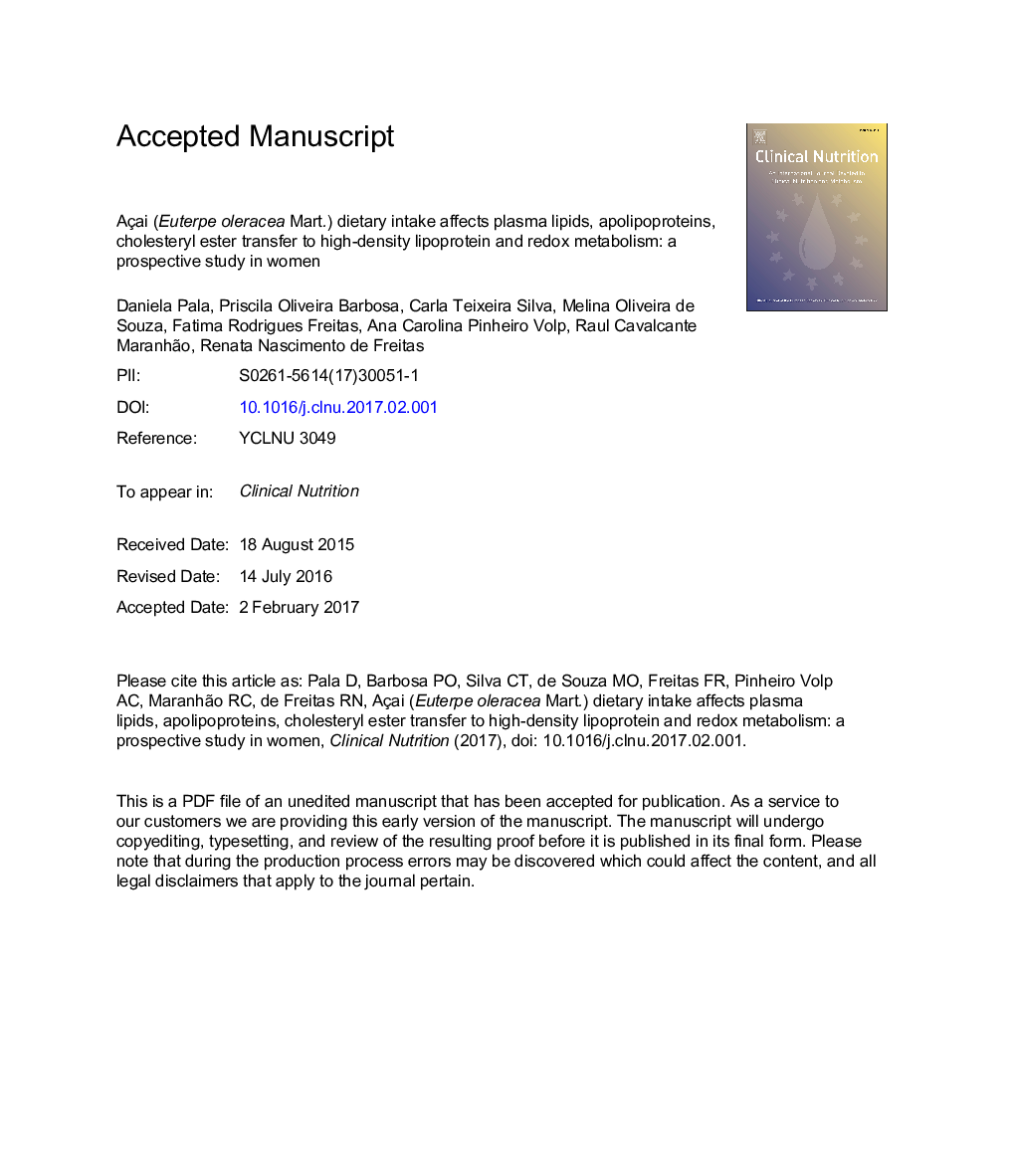| Article ID | Journal | Published Year | Pages | File Type |
|---|---|---|---|---|
| 8586859 | Clinical Nutrition | 2018 | 26 Pages |
Abstract
The açai fruit (Euterpe oleracea Martius), which is native to the Brazilian Amazon region, was shown to have high polyphenols and MUFA contents. In this study, we aimed to assess the effects of açai consumption on plasma lipids, apolipoproteins, the transfer of lipids to HDL (which is a relevant HDL function), and some biomarkers of redox metabolism. Forty healthy volunteer women aged 24 ± 3 years consumed 200 g of açai pulp/day for 4 weeks; their clinical variables and blood sample were obtained before and after this period. Açai pulp consumption did not alter anthropometric parameters, systemic arterial pressure, glucose, insulin and total, LDL and HDL cholesterol, triglycerides and apolipoprotein (apo) B, but it did increase the concentration of apo A-I. Açai consumption decreased the ROS, ox-LDL and malondialdehyde while increasing the activity of antioxidative paraoxonase 1. Overall, the total antioxidant capacity (TAC) was increased. Regarding the transfer of plasma lipids to HDL, açai consumption increased the transfer of cholesteryl esters (p = 0.0043) to HDL. Unesterified cholesterol, phospholipids and triglyceride transfers were unaffected. The increase in apo A-I and the cholesteryl ester transfer to HDL after the açai intake period suggests that an improvement in the metabolism of this lipoprotein occurred, and it is well known that HDL is protective against atherosclerosis. Another important finding was the general improvement of the anti-oxidant defences elicited by açai consumption. Our data indicate that açai has favourable actions on plasma HDL metabolism and anti-oxidant defence; therefore açai could have a beneficial overall role against atherosclerosis, and it is a consistently good candidate to consider as a functional food.
Keywords
MDANOSApo A-IOx-LDLMUFAPON1HDLTACSFAapo Bhigh-density lipoproteinROSApolipoprotein A-IApolipoprotein BAçaíPolyunsaturated fatty acidsPUFAsaturated fatty acidsmonounsaturated fatty acidsHumanTriglyceridesOxidative stressTotal antioxidant capacityPhospholipidsOxidized low-density lipoproteinLipoproteinsLow-density lipoproteinLDLmalondialdehydeNanoparticlesNitric oxidenitric oxide synthaseParaoxonase 1cholesterolcholesteryl estersunesterified cholesterolReactive oxygen species
Related Topics
Health Sciences
Medicine and Dentistry
Critical Care and Intensive Care Medicine
Authors
Daniela Pala, Priscila Oliveira Barbosa, Carla Teixeira Silva, Melina Oliveira de Souza, Fatima Rodrigues Freitas, Ana Carolina Pinheiro Volp, Raul Cavalcante Maranhão, Renata Nascimento de Freitas,
